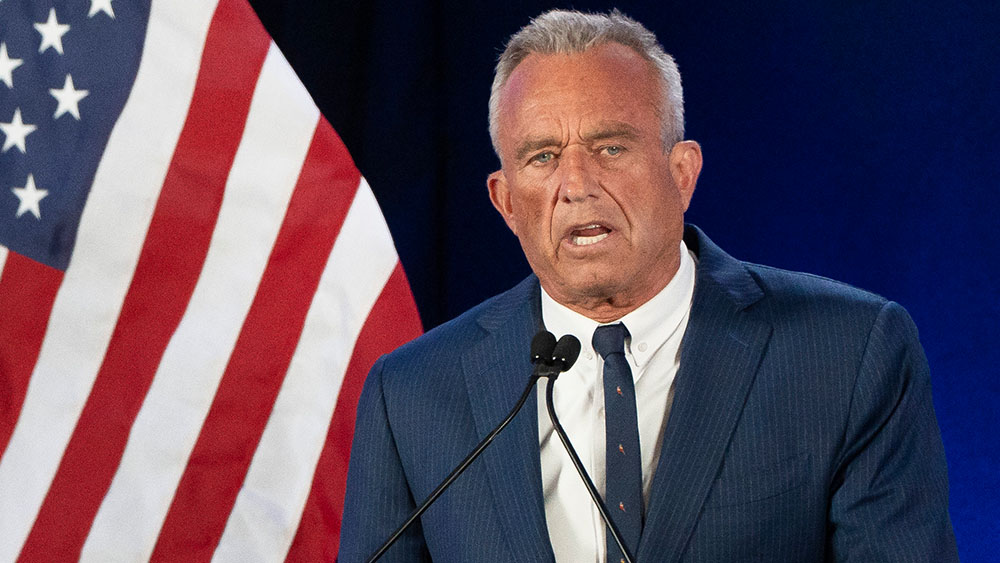
- Robert F. Kennedy Jr. recently clarified his stance on the polio vaccine amid revelations that one of his legal allies - Aaron Siri - had sought to revoke FDA approval for one of the six polio vaccines in 2022 due to cancer concerns.
- Kennedy, who is vying for the Health and Human Services Secretary role, told reporters, "I’m all for the polio vaccine," while making rounds with GOP senators.
- Senate Minority Leader Mitch McConnell, a polio survivor himself, advised Kennedy to "steer clear of even the appearance of association with such efforts" to remove polio vaccines from the market.
- Critics, including parents of vaccine-injured children, argue that the current vaccine schedule is too rigorous and that certain vaccines may not be necessary for babies.
- The push for 77 doses, including vaccines containing neurotoxins, calls for a urgent re-evaluation of each vaccine and the time it is introduced to kids.
Can vaccine-derived polio cases be solved with the current vaccine supply?
The recent controversy surrounding polio vaccines and cancer has raised questions about the polio vaccine's necessity and safety, especially with evidence suggesting the oral polio vaccine contributes to vaccine-derived polio cases in immunocompromised individuals.
Vaccine-derived poliovirus (VDPV) is a type of poliovirus that can occur in regions with low vaccination coverage. It is a mutated form of the weakened poliovirus that was originally part of the oral poliovirus vaccine (OPV). Here are some important points to understand about vaccine-derived polio:
Key facts:
- Origin: VDPVs are derived from the live, attenuated (weakened) poliovirus in the oral polio vaccine, which was recently stripped of its license and removed from the market in the US.
- Mutation: In areas with poor sanitation and low nutrition, the vaccine virus can sometimes mutate and regain the ability to cause paralysis in immune compromised children.
- Transmission: VDPVs can spread in the same way as wild poliovirus, through person-to-person transmission, especially in areas with poor sanitation and hygiene.
Types of VDPV:
- Circulating Vaccine-Derived Poliovirus (cVDPV): This is the most dangerous type, capable of causing outbreaks in communities with low vaccination coverage.
- Immunodeficiency-associated VDPV (iVDPV): These viruses are shed by individuals with primary immunodeficiencies for prolonged periods.
- Ambiguous VDPV (aVDPV): These are viruses that show signs of being from vaccine origin but are not conclusively classified as either cVDPV or iVDPV.
- The risk of VDPV emergence is much lower with inactivated polio virus vaccine (IPV), which contains non-replicating poliovirus.
The Cutter Incident and the failure of early polio vaccine campaigns
The first polio vaccine campaign, which began in the United States in 1955, did experience some significant issues. The campaign was based on the inactivated poliovirus vaccine (IPV) developed by Dr. Jonas Salk. However, there was a serious problem with one of the vaccine manufacturers, Cutter Laboratories, which had improperly inactivated the poliovirus in the vaccine they produced. This resulted in contaminated vaccine batches that were able to cause polio-like symptoms and disabilities in some recipients.
This incident is often referred to as the "Cutter incident" and resulted in about 200,000 cases of mild polio (causing symptoms such as fever and muscle pain, but no paralysis) and 11 cases of paralysis. Two of these cases were fatal.
This tragedy led to immediate changes in vaccine production and distribution practices, including more rigorous quality control measures and better testing of vaccine lots before they were released. It also highlighted the importance of careful vaccine development and the potential risks involved in vaccine campaigns.
SV40 cancer-causing virus transmitted through older versions of the polio vaccine
- In the 1950s and early 1960s, a few batches of the polio vaccine did contain SV40, a cancer-causing virus. The virus came from the monkey kidney cells used to grow the vaccine.
- By 1961, scientists discovered SV40 in some polio vaccines. This discovery led to changes in vaccine production methods, and SV40 was eliminated from vaccines.
- The initial concern about SV40 led to safer methods of producing vaccines, and this has likely prevented other potential contamination.
Polio is a commensal enterovirus and damage to the spinal cord requires other factors besides viral infection
Polio vaccines have been removed from the market in the past because they caused disabilities and death. The oral polio vaccine’s current necessity is impaired by the fact that it causes polio viruses to mutate and spread. Supporting the current polio vaccine supply and recommending it for babies could benefit young children if a crippling polio outbreak were to spread among children; however, polio incidence already declined decades ago, due to improvements in sanitation and water quality as well as refrigeration, transportation, food availability, and nutrition. Widespread use of nervous system and immune system-disrupting chemicals like DDT also ended at that the same time that polio peaked.
Moreover, poliovirus is benign in most cases. Polio is a commensal enterovirus, and it's effects on the body are akin to a cold virus, at least for children with healthy immune systems who aren't being exposed to constant toxic exposures like DDT and other immunosuppresants. After all, damage to the spinal cord is not polio; that's poliomyelitis, which is a more complex condition exacerbated by other toxic exposures. In fact, poliomyelitis is similar to other crippling conditions experienced today, such as transverse myelitis, which is listed as a side effect on vaccine insert sheets!
If confirmed as head of HHS, Robert F. Kennedy Jr. will have to analyze the necessity of the polio vaccine in today’s children, especially in babies whose immune systems are not properly developed to handle these antigens, aluminum adjuvants, and other toxins. It’s time for HHS to take a critical look at all vaccines, including the holy grail, the polio vaccines.
Sources include:
Scribd.com [PDF]
Please contact us for more information.




















